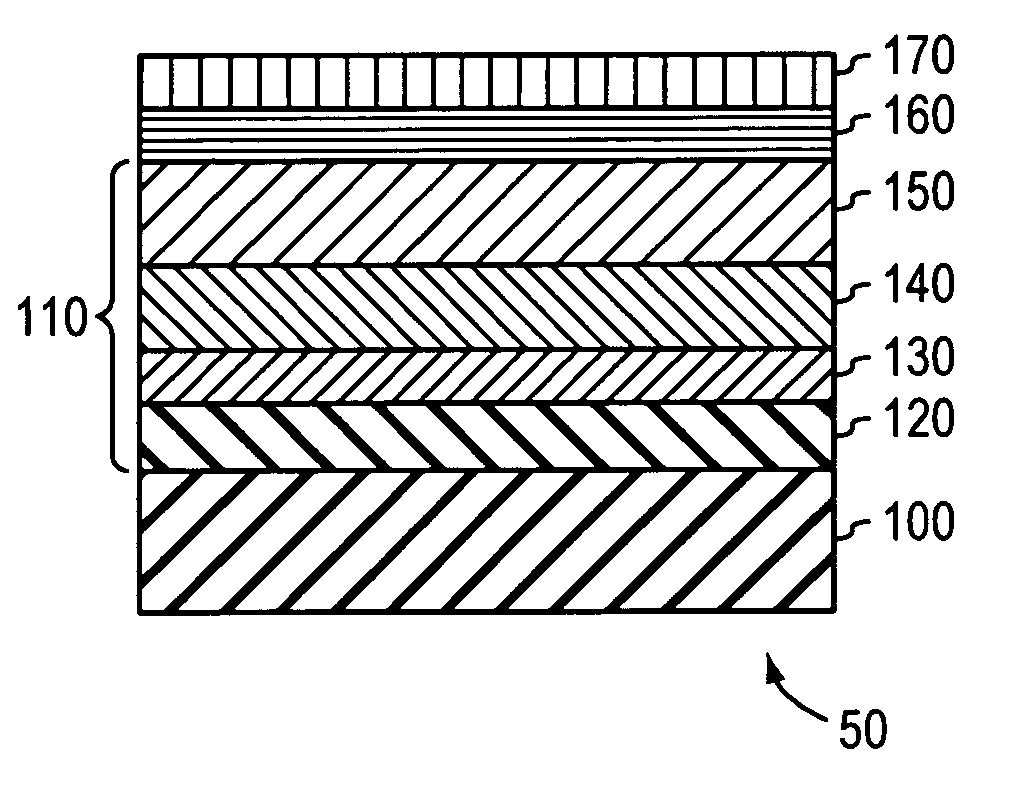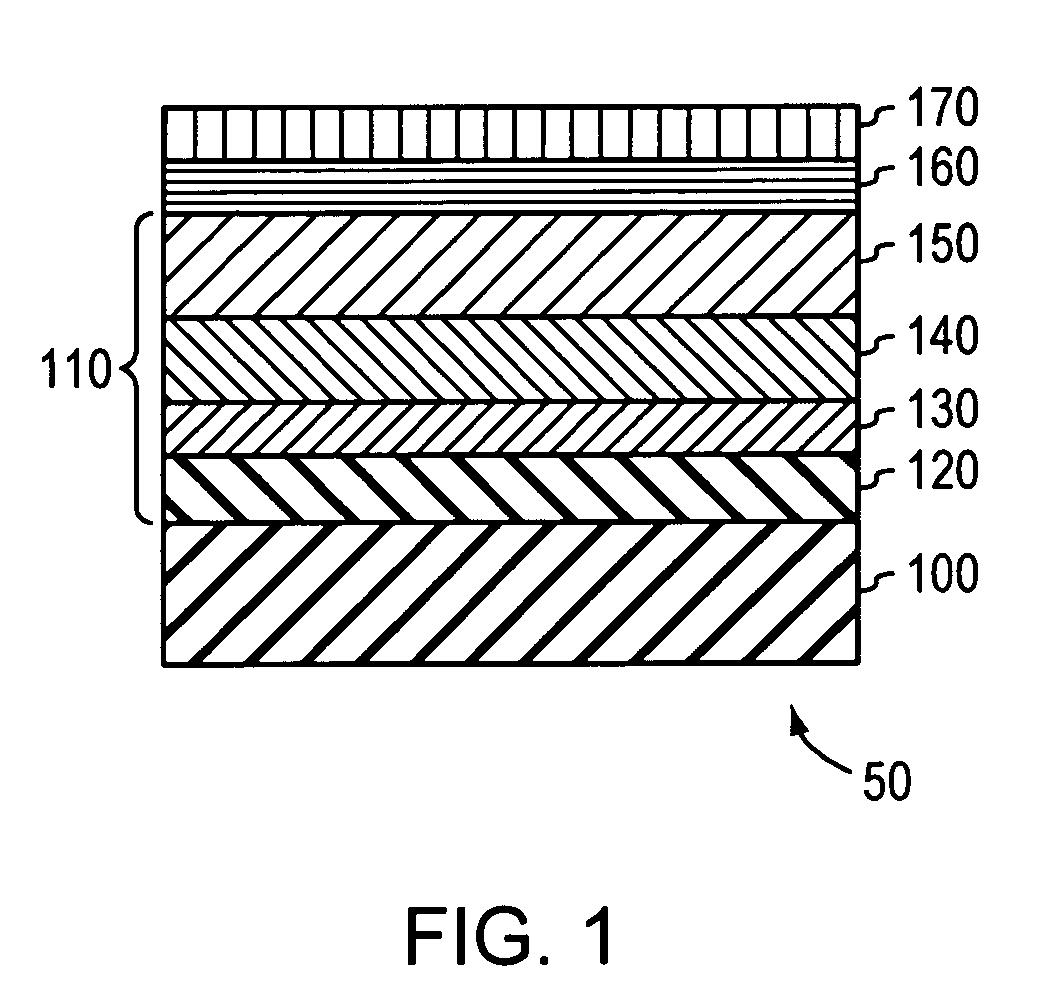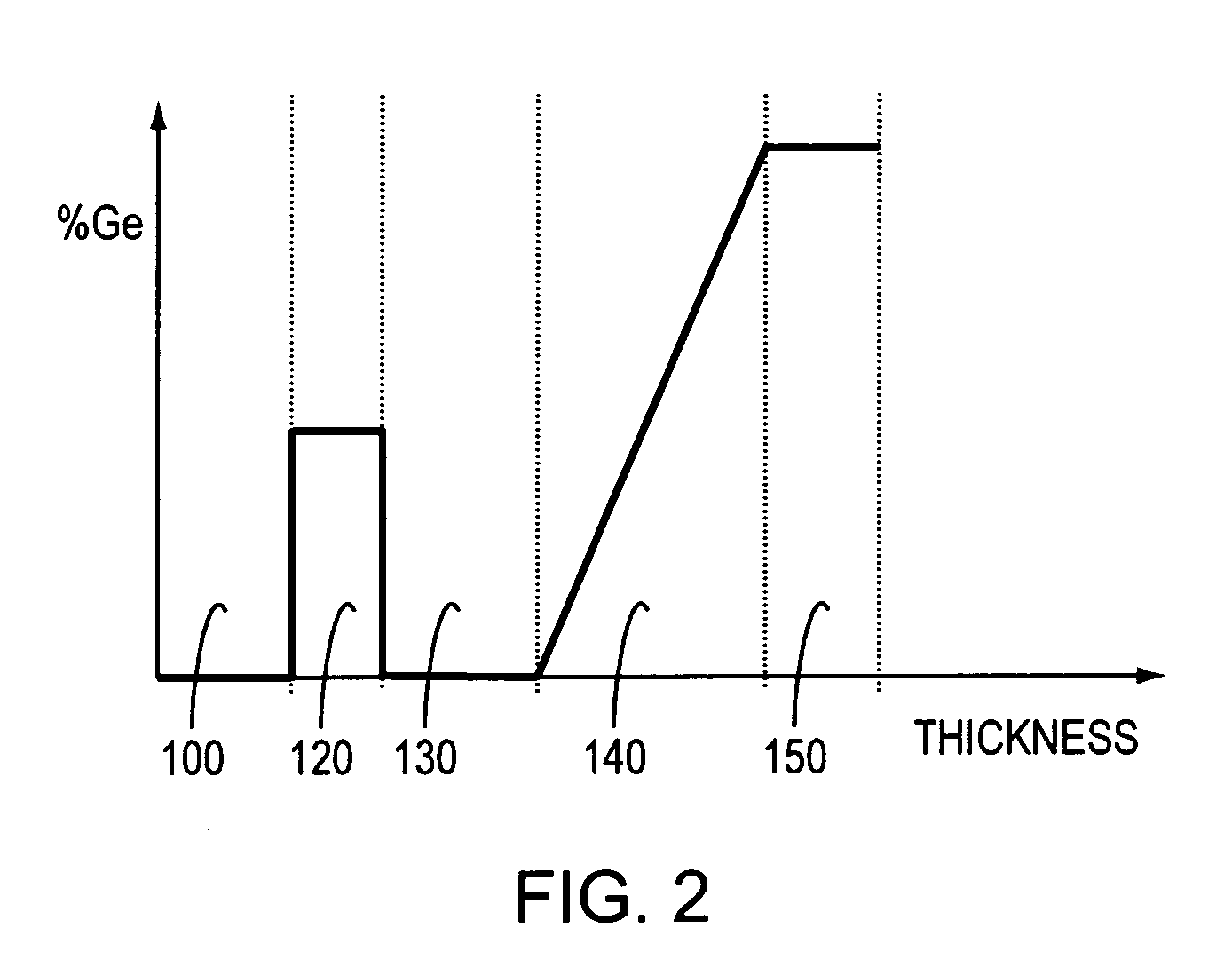Methods of fabricating semiconductor heterostructures
a semiconductor and heterostructure technology, applied in the direction of crystal growth process, polycrystalline material growth, chemically reactive gas, etc., can solve the problems of lattice-mismatched surface cross-hatch, linear agglomeration of threading dislocations, and the need for an increase in the complexity and functionality of the semiconductor structur
- Summary
- Abstract
- Description
- Claims
- Application Information
AI Technical Summary
Benefits of technology
Problems solved by technology
Method used
Image
Examples
Embodiment Construction
[0054] In accordance with various embodiments of the present invention, a semiconductor layer having a plurality of threading dislocations distributed substantially uniformly across its surface is used as a starting layer prior to the subsequent growth and relaxation of the compositionally graded layer and, optionally, as at least one intermediate layer during growth of the graded layer.
[0055] Referring to FIG. 1, a semiconductor structure 50 made in accordance with the embodiments of the invention includes a substrate 100. The substrate 100, suitable for use with the invention, comprises a semiconductor, such as silicon, silicon deposited over an insulator, such as, for example, SiO2, or a silicon-germanium alloy. In one embodiment, several semiconductor layers collectively referred to as layers 110 are epitaxially grown over the substrate 100. In this embodiment, the layers 110 and the substrate 100 may be referred to together as a “virtual substrate.”
[0056] The epitaxially grown...
PUM
| Property | Measurement | Unit |
|---|---|---|
| temperature | aaaaa | aaaaa |
| temperature | aaaaa | aaaaa |
| thickness | aaaaa | aaaaa |
Abstract
Description
Claims
Application Information
 Login to View More
Login to View More - R&D
- Intellectual Property
- Life Sciences
- Materials
- Tech Scout
- Unparalleled Data Quality
- Higher Quality Content
- 60% Fewer Hallucinations
Browse by: Latest US Patents, China's latest patents, Technical Efficacy Thesaurus, Application Domain, Technology Topic, Popular Technical Reports.
© 2025 PatSnap. All rights reserved.Legal|Privacy policy|Modern Slavery Act Transparency Statement|Sitemap|About US| Contact US: help@patsnap.com



